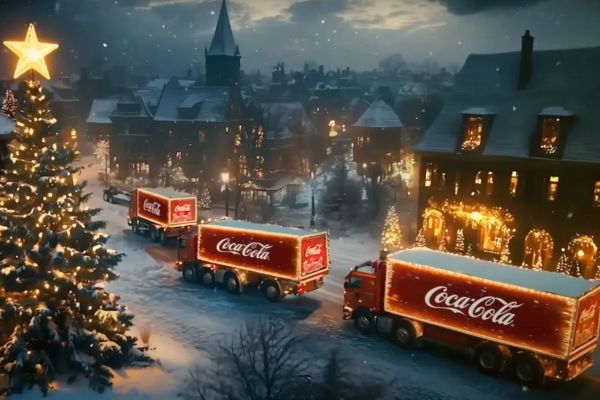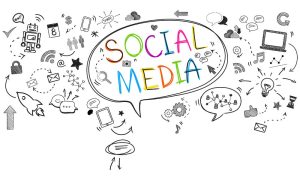The holiday season brings a surge in consumer demand and year-end budgets, making it a prime opportunity for brands to connect with their audience. Effective holiday marketing campaigns can drive leads, strengthen partnerships, and elevate brand awareness. By planning strategically, businesses can make the most of this busy season and achieve lasting success.
Standing out during the holidays requires creativity, timing, and a deep understanding of customer needs. Whether through festive promotions, heartfelt storytelling, or limited-time offers, brands that craft memorable campaigns can build stronger relationships and drive sales long after the season ends. Let’s explore key strategies and inspiring examples to help your business shine this holiday season.

What Is a Holiday Marketing Campaign?
A holiday marketing campaign is a promotional strategy built around seasonal events, offering limited-time deals, themed content, and targeted messaging to match the spirit of the occasion. These campaigns often peak during the traditional holiday stretch from November through early January, but smart brands know the opportunity doesn’t stop there.
Common holidays that spark strong marketing activity include:
- Thanksgiving
- Black Friday
- Cyber Monday
- Hanukkah
- Christmas Eve & Christmas Day
- New Year’s Eve
- Diwali
- Small Business Saturday
- Giving Tuesday
- Green Monday
And the list doesn’t end there – Valentine’s Day, Mother’s Day, back-to-school season, and even niche holidays (like National Coffee Day) can all be valuable opportunities depending on your brand and audience.
So why do most businesses double down on campaigns during the November–January window? Because the numbers and behavior speak for themselves:
- Customer demand is at its peak. Shoppers are more active, and purchase intent is high. In fact, U.S. holiday spending exceeded $211 billion in 2022 alone.
- Time-limited offers create urgency. Whether it’s “48-hour flash sales” or exclusive holiday bundles, a clear deadline drives quicker decisions and more conversions.
- Social media is holiday central. Platforms like Instagram and TikTok are go-to places for gift ideas and seasonal inspiration, especially among Gen Z, where 87% say they use social media for holiday shopping ideas.
- It’s an emotional time of year. The holidays bring out generosity, nostalgia, and goodwill, perfect for campaigns that aim to connect on a deeper level through storytelling, visuals, and values.
In short, holiday marketing isn’t just about selling, it’s about showing up with the right message at the right time. Whether you’re aiming to drive revenue, grow your audience, or deepen loyalty, seasonal campaigns – done right – can deliver big impact.
Before you launch your next campaign, take the time to plan with purpose. The most memorable holiday marketing isn’t rushed or generic; it’s timely, thoughtful, and tailored to your audience’s mindset. Let’s explore how to build one that actually converts.
The Best Holiday Marketing Campaign Examples From Last Year
If you are looking for inspiration, these standout holiday campaigns from 2024 show how top brands combined creativity, emotion, and smart strategy to connect with their audiences. From classic storytelling to tech-driven experiences, here are the campaigns that made an impact, and what you can learn from them.
- John Lewis – “Snapper: The Perfect Tree” – Continuing its tradition of heartwarming storytelling, John Lewis’s 2024 Christmas advert featured a whimsical tale about a boy and his mischievous Venus flytrap named Snapper. The narrative emphasized themes of acceptance and the joy of unconventional traditions, resonating deeply with audiences and reinforcing the brand’s reputation for emotionally compelling holiday campaigns.
- Coca-Cola – AI-Enhanced “Holidays Are Coming” – Coca-Cola revitalized its iconic “Holidays Are Coming” campaign by integrating AI-generated visuals, aiming to blend nostalgia with modern technology. While the approach sparked discussions about the role of AI in advertising, it successfully reignited interest in the classic campaign and demonstrated Coca-Cola’s willingness to innovate.
- Spotify – “Wrapped 2024” – Spotify’s annual “Wrapped” campaign continued to captivate users by providing personalized year-in-review summaries of their listening habits. The 2024 edition expanded its reach with enhanced sharing features and interactive elements, encouraging widespread social media engagement and reinforcing user loyalty.
- Nordstrom – “Make Merry” – Nordstrom’s “Make Merry” campaign stood out by combining sustainability with customer engagement. The retailer introduced recyclable shopping bags that could be transformed into origami decorations, encouraging customers to share their creations online. This initiative not only promoted eco-friendly practices but also fostered a sense of community among shoppers.
- Sainsbury’s – “The BFG Delivers Christmas” – Sainsbury’s collaborated with the Roald Dahl Story Company to feature the Big Friendly Giant (BFG) in its festive campaign. The advert depicted the BFG delivering holiday joy across the UK, aligning with Sainsbury’s brand values of warmth and generosity. The campaign was lauded for its creativity and emotional impact.
- Shutterfly – “Make Something That Means Something” – Shutterfly’s campaign emphasized the value of personalized gifts over generic ones. By showcasing customizable photo books, cards, and home décor items, the brand encouraged consumers to create meaningful, heartfelt presents, reinforcing Shutterfly’s position as a go-to platform for personalized gifting.
- Saint Laurent – “In Search of Lost Time” – Saint Laurent’s holiday campaign took a cinematic approach, presenting a series of short films inspired by Marcel Proust’s “In Search of Lost Time.” Directed by Nadia Lee Cohen, the visually rich narratives explored themes of memory and desire, aligning with the brand’s luxurious and avant-garde image.
- Agent Provocateur – “Date Night” – Agent Provocateur’s festive campaign featured real-life couple Abbey Clancy and Peter Crouch in a playful narrative that highlighted the importance of keeping the spark alive during the busy holiday season. The campaign blended humor and sensuality, effectively capturing attention and reinforcing the brand’s bold identity.
- Poppi – “Cranberry Fizz Comeback” – Beverage brand Poppi leveraged social media buzz to reintroduce its seasonal Cranberry Fizz flavor. By sharing enthusiastic customer testimonials and engaging visuals, Poppi created anticipation and excitement, demonstrating the power of user-generated content in driving product demand.
- Macy’s – “Believe” Campaign – Macy’s continued its longstanding “Believe” campaign, encouraging customers to write letters to Santa Claus. For each letter received, Macy’s donated $1 to the Make-A-Wish Foundation. This initiative combined holiday tradition with charitable giving, strengthening Macy’s community engagement and brand goodwill.

Top Holiday Marketing Campaign Ideas for Brands
The holidays are the perfect time to engage customers, attract new leads, and strengthen brand loyalty. Here are some proven holiday marketing campaign ideas to inspire your seasonal strategy:
1. Corporate Gifting Programs
Show appreciation and build loyalty with thoughtful gifts that your clients and partners will remember. Personalized swag, custom gift boxes, or VIP client presents not only strengthen relationships, but also keep your brand top of mind during the holiday season.
2. Limited-Time Offers
Boost sales and urgency with special holiday promotions. Think discounts on annual contracts, free consultations, or exclusive service bundles. Limited-time offers encourage quick decision-making and can attract new customers looking to make the most of their year-end budgets.
3. Content Campaigns
Engage your audience by sharing valuable holiday-themed content. Consider hosting festive webinars, publishing insightful “Year in Review” reports, or launching interactive social media campaigns. Quality seasonal content not only highlights your expertise but also increases brand visibility and strengthens your connection with customers.
4. Social Media Giveaways
Create excitement and engagement through holiday-themed social media giveaways. Contests offering prizes such as free services, product bundles, or exclusive branded merchandise encourage shares and follows, significantly extending your brand’s reach and fostering deeper community engagement.
5. Charitable Initiatives
Promote goodwill and brand values by aligning your campaign with a charitable cause. Partner with nonprofits for seasonal fundraising drives, donation-matching programs, or community volunteering events. Customers increasingly favor brands that demonstrate social responsibility, especially during the holiday season.
How to Plan a High-Converting Holiday Campaign
The holidays are a competitive season, and a well-structured campaign can make the difference between strong sales and missed opportunities. Here’s a step-by-step guide to planning a high-converting holiday marketing campaign, backed by data and real-world examples.
1. The Importance of Early Planning
Early planning is essential to the success of your holiday marketing campaigns. Starting your preparation months in advance allows you to thoroughly research, set clear goals, and design impactful campaigns before competitors flood the market.
According to Sprout Social, brands that launch holiday campaigns early achieve higher customer engagement rates and better campaign ROI, as customers often start holiday shopping well ahead of peak season. Early planning also ensures enough time for adjustments based on market trends, customer feedback, and potential partnerships, positioning your brand strategically ahead of your competition.
Here’s a simple checklist to guide you through each stage of planning:
- 3 Months Before: Set Goals – Start early by defining clear objectives for your campaign, such as generating new leads, boosting sales, or increasing brand awareness. Setting goals early ensures you have enough time to tailor your strategy and allocate resources effectively.
- 2 Months Before: Finalize Content – By now, your campaign ideas and strategy should be finalized. Develop your holiday-themed content, confirm your influencer partnerships, and start designing your promotional materials. Completing this step early prevents last-minute stress and ensures your messaging stays consistent.
- 1 Month Before: Launch Promotion – With your goals set and content ready, launch your campaign early to build anticipation and capture early shoppers. Starting promotion one month ahead helps you stand out from competitors and maximizes engagement opportunities.
Using this timeline helps your team stay organized, strategically paced, and ready to capitalize fully on the busy holiday season.
2. Define Your Holiday Campaign Goals
Clearly defining your goals is critical to crafting a focused and measurable holiday campaign. Identify whether your primary objectives are lead generation, customer retention, brand awareness, or a mix of these.
For instance, if boosting leads is your goal, campaigns might feature exclusive offers that incentivize new sign-ups. If retention is your priority, personalized rewards or loyalty discounts could be effective. Establishing clear objectives upfront helps you align campaign efforts with measurable outcomes.
Example: Using the SMART framework helps ensure your objectives are focused and achievable:
- Specific: Clearly outline what you want your campaign to accomplish (e.g., “increase holiday sales by 20%”).
- Measurable: Set targets that you can track with metrics, like leads generated, conversion rates, or revenue growth.
- Achievable: Set realistic goals based on your available resources and past campaign performance.
- Relevant: Ensure your campaign goals align with your broader business objectives and resonate with your audience’s interests.
- Time-bound: Define a clear timeframe for reaching your goals (e.g., “by December 31”).
Using the SMART framework clarifies your direction, helps you measure success effectively, and keeps your team aligned throughout your holiday marketing campaign.

3. Choose the Right Influencers
Selecting appropriate influencers can dramatically enhance your holiday campaign’s reach and credibility. Focus on influencers whose audience aligns closely with your brand demographics and whose values match your campaign messaging.
Micro-influencers, who typically have higher engagement rates within niche markets, can also offer significant ROI. Assess influencers based on past holiday campaigns, audience engagement rates, and authenticity to ensure they genuinely resonate with your target audience.
To simplify this process, consider using influencer discovery platforms like Hypefy. These tools enable brands to efficiently identify influencers who align with their audience, values, and campaign objectives. Platforms like Hypefy not only help you discover suitable influencers quickly but also streamline campaign management, communications, and performance tracking, saving you valuable time and ensuring more successful partnerships.
4. Multi-channel Promotion
Leveraging multiple channels, including email, social media, and in-store promotions, significantly amplifies your holiday marketing impact. A multi-channel approach helps you reach customers wherever they engage with your brand, ensuring cohesive messaging and maximizing conversion opportunities.
When running holiday campaigns across multiple channels, clarity is crucial. Creating a simple visual chart or table that maps each marketing channel, such as email, social media, in-store promotions, or direct mail, to your campaign objectives can greatly enhance team alignment and effectiveness.
For example, your chart could include:
- Email Marketing → Goal: Customer retention and conversions
- Social Media → Goal: Brand awareness and audience engagement
- In-store Promotions → Goal: Immediate sales and brand experience
This visual approach helps everyone clearly see how each channel uniquely supports your overall campaign strategy and ensures focused execution across your entire marketing team.
5. Plan and Optimize Your Content
Strategically planning and optimizing your holiday content ensures higher visibility and engagement. Align content themes and formats (e.g., blogs, social posts, videos, emails) with your audience’s interests and seasonal trends. Use keyword research, competitive analysis, and past performance data to guide content creation. Optimizing content for SEO and mobile viewing also increases discoverability and accessibility, helping your campaign reach a wider audience effectively.
Choosing the right content formats can make a big difference in how your holiday campaign performs. Certain formats consistently perform well during the festive season because they’re interactive, shareable, and tailored to what audiences are looking for.
Here are a few content types worth considering:
- Interactive Gift Guides – Help customers find the perfect gifts by creating filterable guides based on interests, budgets, or recipients.
- Countdown Calendars – Build excitement with daily deals or tips leading up to a holiday (like an advent-style calendar).
- Holiday Video Greetings – Humanize your brand with short, warm messages from your team or influencers to your audience.
These formats are not only engaging but also give your brand more personality, helping you stand out during a time when audiences are flooded with marketing messages.
6. Leveraging Social Media Trends
Social media platforms like Instagram and TikTok significantly influence consumer behavior, especially during the holidays. Users frequently seek inspiration, gift ideas, and holiday experiences through visually engaging content.
For instance, according to HubSpot, 60% of consumers discover new products via Instagram during the holiday season, and TikTok’s hashtag challenges drive impressive engagement and product sales. Brands should monitor trending hashtags, platform-specific holiday features, and viral content types to leverage these trends effectively in campaigns.
Social media trends can play a big role in the success of holiday marketing campaigns, especially when they’re timely and easy to engage with. Including real-life examples helps bring your strategy to life and offers inspiration for your own content.
Here are a couple of standout holiday trends from recent years:
- TikTok Gift Challenges – Brands like Walmart and Target have jumped on trending challenges where creators share gift ideas under a specific budget (e.g., “$25 Holiday Gift Haul”), often using branded hashtags to boost visibility and participation.
- Instagram Advent Calendars – Many beauty and lifestyle brands have created daily giveaway or product reveal posts leading up to Christmas, encouraging daily engagement and shares with visually consistent, themed content.
Incorporating trends like these not only boosts your visibility but also helps your brand feel current and connected to what your audience is already enjoying online.

7. Personalization and AI Integration
Personalized content enhanced by artificial intelligence (AI) is becoming increasingly influential in holiday marketing. Modern consumers expect personalized experiences, and AI-driven technologies can efficiently segment audiences, tailor offers, and deliver targeted messaging.
Coca-Cola’s recent use of AI-generated ads for personalized holiday messages saw significant consumer enthusiasm, indicating how powerful tailored content can be in capturing attention and fostering brand loyalty.
AI isn’t just a buzzword, it’s a powerful tool that can enhance your holiday marketing strategy in practical, measurable ways. Beyond personalized ads, here are a few smart ways brands are using AI to improve the customer experience during the holiday season:
- Chatbots for Customer Support – AI-powered chatbots can handle common customer questions 24/7, reducing wait times and keeping shoppers happy during peak traffic periods.
- Personalized Email Automation – AI can segment your audience and send tailored holiday emails based on user behavior, improving open and conversion rates.
- AI-Powered Product Recommendations – By analyzing browsing and purchase history, AI can suggest relevant products, increasing average order value and customer satisfaction.
These tools help brands scale their holiday efforts while still delivering a personal, responsive experience that shoppers expect, especially during the busiest time of the year.
8. Measuring Campaign Success
Effectively measuring your holiday marketing campaigns requires clearly defined Key Performance Indicators (KPIs). Common KPIs include conversion rates, click-through rates (CTR), return on ad spend (ROAS), social engagement metrics, and customer retention rates.
Utilize analytics tools like Google Analytics, Sprout Social, or specialized platforms like Hypefy to gather data, analyze performance, and refine future campaigns. Regularly assessing these metrics helps brands understand campaign effectiveness, identify areas for improvement, and demonstrate clear ROI.
Don’t skip the post-campaign review – Once your holiday marketing campaign wraps up, it’s important not to move on too quickly. Scheduling a post-campaign evaluation meeting helps your team reflect on what worked, what didn’t, and what can be improved next time.
During the review, you can:
- Analyze performance data against your original goals
- Identify your top-performing channels, content, and tactics
- Discuss any unexpected challenges or wins
- Document key takeaways and action points for future planning
This step ensures you’re not just running campaigns, but continuously learning from them, making each one smarter and more effective than the last.
Check out our complete guide on Influencer Marketing ROI: How to Measure & Maximize Returns to learn how to track, analyze, and boost your results. (linkovati kada se pablisuje)
Final Thoughts: Make This Holiday Season Your Brand’s Best Yet
Holiday marketing campaigns offer a powerful opportunity to connect with your audience, drive meaningful results, and end the year on a high note. With the right mix of planning, creativity, and data-driven strategy, your brand can stand out in a crowded season and build lasting customer relationships.
From setting clear goals to leveraging influencers, embracing AI, and optimizing your content across channels, every step plays a role in creating a campaign that converts. Start early, stay focused, and make this holiday season your brand’s most successful yet.



